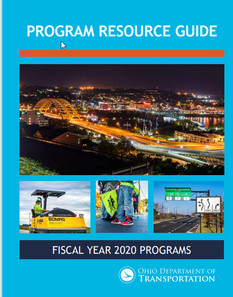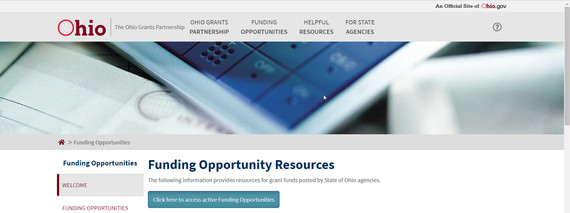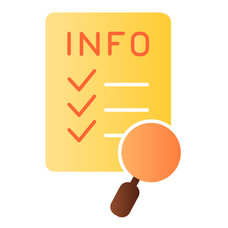I want to thank all of you for your incredible efforts over the last year of unprecedented challenges. The state operating budget for fiscal years 2022-2023 is currently in General Assembly deliberations. On March 31, 2021, Governor DeWine signed the two-year Transportation budget, which will continue our commitment to invest in Ohio’s roads, bridges, and essential infrastructure. Furthermore, we are all eagerly awaiting guidance on the new federal American Rescue Plan Act of 2021, which will infuse billions of dollars into our state and local communities. We look forward to working closely with you to ensure prudent management of these public funds.
The OBM and Ohio Grants Partnership’s ongoing efforts to provide technical assistance and guidance will continue with a spring webinar series on the CARES Act and the American Rescue Plan Act. Additional details are available in this newsletter.
Finally, we strive to provide transparent and useful information regarding state revenue and spending on the OBM website. I encourage you to explore the reports and let us know what is helpful to you. Please email us at contact@obm.ohio.gov. Our most recent OBM Monthly Financial Report was posted this week.
As always, do not hesitate to reach out to me or any member of the OBM staff with questions or for assistance in support of your mission on behalf of Ohio’s communities and citizens.

The Ohio Grants Partnership will be leading a spring webinar series to provide more information on the American Rescue Plan, answer questions you may have on Coronavirus Relief Funds or CARES Act reporting. Save the following dates!
- April 29, 2021
- May 18, 2021
- June 24, 2021
Please stay tuned for additional information on registration and meeting times.
|
The Department of Transportation Program Resource Guide

The Ohio Department of Transportation’s (ODOT) Program Resource Guide is intended to provide a "one-stop shopping" document to ODOT’s constituents – local governments, transportation advocacy groups, planning organizations, and Ohio’s citizens.
ODOT is one of Ohio’s largest state agencies, with 12 regional district offices, that administer several different funding programs. It can be challenging to interact efficiently with a large agency and the Program Resource Guide provides customer-friendly overviews on specific state and local roadway, bridge, safety, and other mobility-focused resources.
Transportation projects and needs are growing at a faster rate than the funding available to meet those needs. The guide provides an overview of available transportation infrastructure funding sources, how to access them, and contact names for assistance in securing funds to address the issues crucial to the continued development of Ohio communities.
Please click the following link Program Resource Guide | Ohio Department of Transportation to access the most recent document.
|
American Rescue Plan Act Funding
As you are likely aware, the latest COVID-related federal response bill, the American Rescue Plan (ARP) Act of 2021, was enacted on March 11, 2021. This is the sixth federal bill appropriating funds to respond to and recover from the pandemic. You can find the full text of the ARP here: https://www.congress.gov/117/bills/hr1319/BILLS-117hr1319enr.pdf
We are still awaiting detailed guidance from U.S. Treasury regarding allowable uses for the new State and Local Fiscal Recovery Funds. In general, we know the law allows the funds to be used through December 31, 2024 to:
- Respond to the public health emergency or its negative economic impacts, including assistance to households, small businesses, and nonprofits, or aid to impacted industries such as tourism, travel, and hospitality.
- Provide premium pay to essential employees or grants to employers to provide premium pay. Premium pay cannot exceed $13 per hour or $25,000 per worker.
- Provide government services affected by a revenue reduction resulting from COVID-19. The revenue reduction is relative to revenues in the fiscal year prior to the pandemic (this is the “revenue loss” provision).
- Make investments in water, sewer, or broadband infrastructure.
Counties and metro cities will receive funding directly from the U.S. Treasury, while smaller cities and villages (“non-entitlement units of local government”) will receive funds through the state. The amounts to be provided to each local government will be stipulated by the U.S. Treasury. Therefore, the state will not be establishing formulas to disburse funds to local governments.
The payments to local governments will be split in two – 50% within 60 days of the enactment of the law and the remaining 50% “not earlier than 12 months after” the first payment.
OBM’s Grants Partnership team will share additional information, once we receive guidelines from U.S. Treasury. We will email the contacts we have in our system from the Coronavirus Relief Fund reporting, publish articles in this newsletter, and schedule webinars to discuss the funding and answer questions.
Coronavirus Relief Fund Monitoring
The Office of Budget and Management, as the prime recipient of Coronavirus Relief Funds from the U.S. Treasury, is required to conduct monitoring activities of their subrecipients to ensure compliance with the federal financial assistance requirements and guidance. Members of the Ohio Grants Partnership recently begun reaching out to subrecipients who were selected for a monitoring visit. This process is expected to continue through December 31, 2021 and beyond. Monitoring activities include inspecting records which may include any of the following:
- general ledger and subsidiary ledgers used to account for (a) the receipt of Coronavirus Relief Fund payments and (b) the disbursements from such payments to meet eligible expenses related to the public health emergency due to COVID-19;
- budget records for 2019 and 2020;
- payroll, time records, human resource records to support costs incurred for payroll expenses related to addressing the public health emergency due to COVID-19;
- receipts of purchases made related to addressing the public health emergency due to COVID-19;
- contracts and subcontracts entered into using Coronavirus Relief Fund payments and all documents related to such contracts;
- grant agreements and grant subaward agreements entered into using Coronavirus Relief Fund payments and all documents related to such awards;
- all documentation of reports, audits, and other monitoring of contractors, including subcontractors, and grant recipient and subrecipients;
- all documentation supporting the performance outcomes of contracts, subcontracts, grant awards, and grant recipient subawards;
- all internal and external email/electronic communications related to use of Coronavirus Relief Fund payments; and
- all investigative files and inquiry reports involving Coronavirus Relief Fund payments.
It is important to note that OBM will not be reviewing all documentation. However, please be aware that all documentation related to Coronavirus Relief Funds must be maintained in accordance with U.S. Treasury Office of Inspector General requirements of five years after final payment is made using Coronavirus Relief Fund monies by the state. OBM will provide a monitoring assessment report once activities have concluded and will work with subrecipients to resolve any issues noted. Finally, OBM is required to review Single Audit reports of subrecipients of Coronavirus Relief Funds that originated from OBM and follow-up on any issues identified. Please feel free to reach out to the Ohio Grants Partnership at grants@obm.ohio.gov with any questions.
Centralized Funding Opportunity Publication
 The Ohio Grants Partnership is continuing to work on providing a “front door” to local governments and others seeking grants from the state. On March 10, 2021, the partnership introduced functionality to state agency partners to allow them to directly publish their funding opportunities to Ohio Grants: Funding Opportunities. There have already been an increase in opportunities published on the site, and it is expected to continue to increase in the coming months as more agencies adopt use of the site so check back often. The goal is to provide a centralized listing of available and archived funding opportunities across the state. Please stay tuned for additional updates on this important initiative in future editions of Ohio Connect$.
How Much Federal Spending Did You Have Last Fiscal Year?

Did you know if you expend $750,000 or more in federal funds in a single fiscal year that you must have a Single Audit? It is important to remember that the expenditure of Coronavirus Relief Funds should be included in determining if you qualify. For the first time, many local governments may find themselves qualifying for a Single Audit due to expending Coronavirus Relief Funds. The U.S. Treasury has allowed the use of Coronavirus Relief Funds to cover the expenses of an audit conducted under the Single Audit Act, subject to the limitations set forth in 2 CFR 200.425, to cover a reasonably proportionate share of the costs of audits attributable to the Coronavirus Relief Funds. If you now qualify for a Single Audit, it is imperative to contact your auditors to make arrangements. This is particularly important for those that are on a biennial audit schedule for fiscal years 2020 and 2021 as the Single Audit must be conducted on an annual basis.
|
|